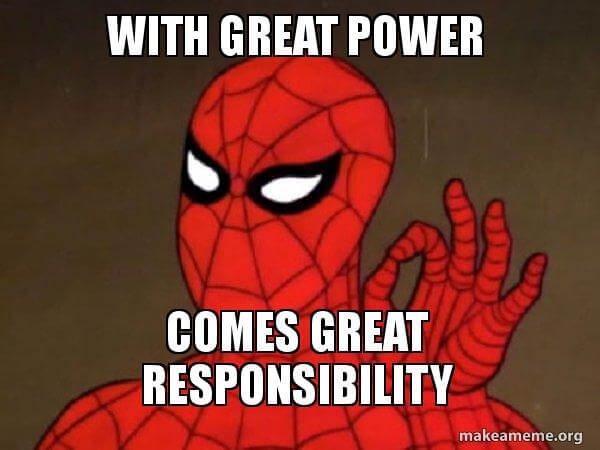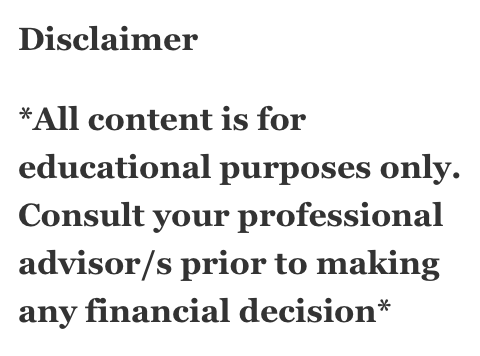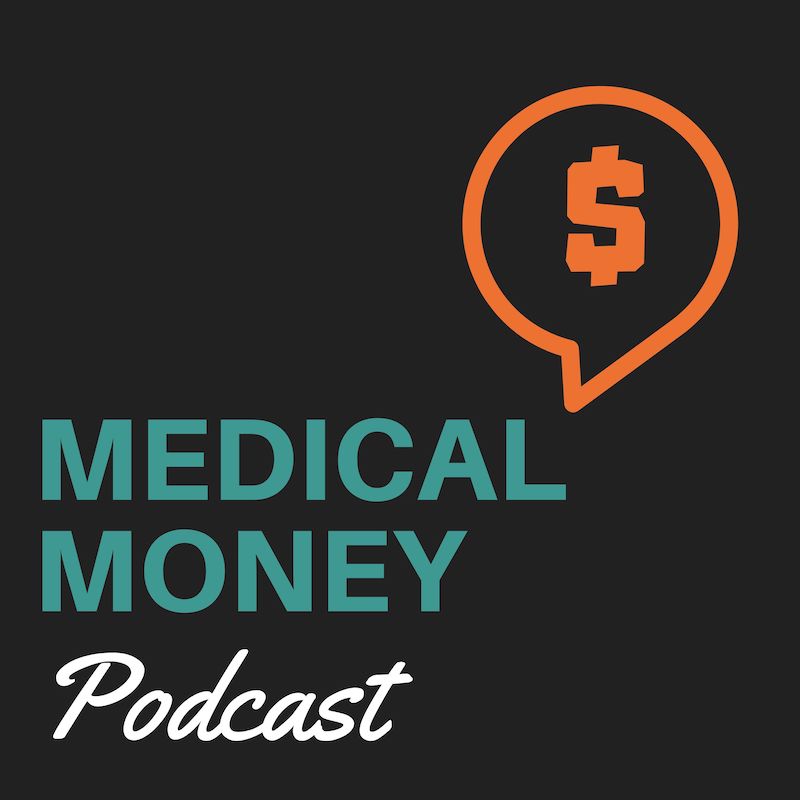
So the new year is upon us bringing another 12 months of new opportunities to grow your wealth.
In this post, you will find 20 ways to increase your bank account by $1,000.
Whether you choose to invest for the future, buy a new toy or donate proceeds to help victims rebuild after the devastating bushfires, I’ll leave that decision up to you.
How many of these might just work for you?
Did you know? $1,000 compounded at just 8% per year is worth $2,158.92 in 10 years? After 20 years it’s grown to a whopping $4,660.96!
Calculate this for yourself using this future value calculator.
Working or Investing?
We all have two resources to grow our wealth:
- Human capital– your experience, skill and effort
- Financial capital– your cash, assets and access to credit
Any investment we make will have an opportunity cost in either time, money or risk. Some will have returns that are scalable and ongoing; others will have a one-off payment.
Let’s have a look at some of the options and discuss the task, upside, downside and costs associated with each.
Human Capital- Using Your Mind, Body and Time
With all of these, please ensure that you have appropriate medical indemnity cover and remember the Hippocratic oath we all pledged upon graduation.

1. Locum
Put all those years of exams and training to good use.
With just a single day’s work, you will make your $1k.
Upside- Work at a time that suits you. You get the chance to visit a different location, try something different and meet some new people. The rates are often better than salaried hospital jobs and you might even bring back some new skills or perspectives to your practice.
Downside- Ensure your medical defence organisation covers you. Check if you also get a superannuation contribution. Choose a role suited to your experience and skillset and make sure you keep good records.
Costs- your time, usually travel and living costs are covered.
Take a look at my previous post for a list of locum agencies or join the Locum Doctors Australia Facebook group to ask the hive questions about conditions, super payments etc.
2. Increase Your Gaps
Those of you in private practice know how this works. Practice costs have gone up faster than Medicare rebates. Find a value proposition that works for you and your patients.
3. Telemedicine
Help patients from anywhere in the world merely using your knowledge and smartphone or laptop.
Upside- you are location independent and can work on a schedule that suits your lifestyle. Usually you’re paid on a fee-for-service basis.
Downside- i-n-d-e-m-n-i-t-y. Physical examination limitations. Ensure you uphold patient confidentiality and privacy principles of 2019.
Cost- your time and data bandwidth.
If you’re interested, take a look at GP Now , Doctoroo and the Australasian Telehealth Society.
4. Surgical Assisting
Enjoy the camaraderie of the operating theatre and stay up to date with the world of surgery.
I work with these guys all day and they never seem very stressed.
Upside- A change of scene from clinical work. Excellent remuneration based on the scheduled surgical fee. Free food and endless coffee. Experience first hand how technology is changing the face of modern surgery.
Downside- the length of operating days can be unpredictable which makes planning after-work activities challenging (welcome to the life of private surgeons and anaesthetists). Some work can be physically demanding and in awkward postures, e.g. tractioning a hip arthroplasty or looking down a microscope for 10 hours in a complicated neurosurgical case.
Cost- your time and muscles. Helps if you learn a few good jokes.
Learn more about assisting from the Medical Surgical Assistants Society of Australia or join an alert service like OpAlert.
5. Medical Writing
Think you’ve got a way with words? Medical writing is the opportunity to utilise your knowledge, research skills and creative flair. Create press releases, website content and instructional material. Help hospitals, government departments and pharmaceutical companies communicate with medicos and the general public.
Upside- The opportunity to learn about the latest advances in health care, work as part of a team and be location independent. Get paid for your output. Some have earned hundreds of thousands on UpWork.
Downside- work can be sporadic and you may need to take some courses to get your writing skills up to par.
Learn more from the Australian Medical Writers Association website and Facebook page.
6. Tutoring
Share your knowledge with the next generation and get paid for it. Whether its clinical skills, basic sciences, admissions tests or interview skills, you can tutor at University, privately or online.
Upside- set your hourly rate and work when it suits you.
Downside- not much but income may be sporadic.
Cost- potentially nothing if you do it online, by phone or your student comes to you.
See the services offered at University Tutor and Gumtree . The University of NSW also has a package of excellent tutor focussed resources called Blast.

7. Medical Expert
Use your skills and experience to perform independent assessments, write reports or give evidence in court as an expert witness.
Upside- set your rate and availability. Help victims of accident and injury get what they deserve.
Downside- avoid if you have an allergy to lawyers or courtrooms.
Cost- your time, expertise and a decent suit.
See the Credentials of experts at Expert Experts. You might also be interested in the Australasian College of Legal Medicine’s Expert Witness Training Course.
8. Create A Course
Chances are you possess knowledge in that brain that people will pay money to obtain. Sites like Udemy and Teachable give you a quick and easy way to upload and sell your course.
Do you have a unique method for approaching written exams, OSCEs, vivas or entrance interviews? Or maybe you know how to teach crochet, quilting or a musical instrument.
Upside- set the price of your course, create it once and receive a passive income stream for years to come
Downside- it’s easy to try and create your magnum opus or masterpiece and invest way too much time. Most students are looking for something they can consume in under an hour.
Cost- You will need a suitable microphone but the camera on your phone or laptop will do the job just fine. Your time and a commission for each sale. Some effort in promoting your course if you want it to take off.
Two years ago, I created a course called “LinkedIn for Doctors & Healthcare Professionals” which sells on Udemy for $29. Every few months I get money deposited into my Paypal account. It hasn’t learnt me $1k yet, but it just ticks over in the background.
9. Create a Youtube Channel
Youtube is the second biggest search engine in the world- beaten only by Google. While competition is significant, there is still a place for those that are willing to put in the work. The more people that watch your videos, the more money you will make.
Upside- a passive income stream with Youtube paying $200- $2000 per million views. You can also recruit sponsors and name your price.
Downside- you will need to create content that resonates with your audience. You’ll also need to understand how the Youtube algorithm works to get your videos placed in viewers recommended lists.
Cost- time and effort to create content. Your smartphone has all the tech you need.
10. Develop a Product or Device
Is there an invention that’s been floating around in your mind? Why not make 2020 the year you move it forward? Last year I went to an interesting talk by Professor Karen Reynolds. With an engineering background, she launched the Medical Device Partnering Program in 2008 at Flinders University. Since then its seen over 500 product ideas and commenced nearly 100 projects. For a nominal fee, you get to tap into the intelligence and experience of an engineering, marketing and production team who can help refine your idea and take it to market. Its been so successful that Universities in eastern states have also come on board.
Upside- bring your idea to life and potentially change the world and receive royalties for life.
Downside- it will take some time to get your idea to market so you might not see the dollars roll in for quite a while.
Cost- $5,000 – $6,000 to gets you an initial 100 hours of planning from a relevant team.
See some projects already in the pipeline or submit your idea here.
Financial Capital- Using Your Money, Assets or Access to Credit
Put your savings or previous purchases to work. Always make sure you assess the downside risk and only invest money you don’t need to stay alive.
11. Direct Real Estate Investment
Make money from collecting rent and/ or capital gains.
There are residential, commercial, industrial and agricultural options all with specific nuances.
Upside- gains are leveraged through the use of a mortgage (which just happen to have incredibly low rates right now). Hold for the long term as a source of income and capital appreciation. If you manage to find a positively geared property, you’ll be making money from day one.
Downside- leverage exposes you to a magnified downside too. Make sure that you only borrow what you can afford and ensure you account for vacancy rates when rental income is 0. Also, be prepared for an increase in interest rates. You can choose to manage the property yourself or outsource this to a rental agent. Real estate is illiquid and ownership has ongoing costs that include taxes and maintenance.
Cost-sizeable costs are associated with both purchase and sale. Most doctors will benefit from a long term approach to direct real estate investment rather than a buy and flip strategy.
12. Increase the Rent on Your Property
Just like increasing your patient gaps, raising the rent on a property you own increases your income with virtually no extra effort. Is it time to call your rental agent?
13. Fractional Ownership Real Estate
Direct property ownership has significant acquisition, holding and disposal costs and can tie up large amounts of capital. A simple way to diversify is through fractional ownership. Methods include partnerships and investment syndicates that pool your funds with other investors. The new kids on the block are companies like BrickX- they purchase a residential property and divide each property into 10,000 bricks. You can buy as many bricks as you like.
Upside- you get to diversify your portfolio across different locations and get an increased level of liquidity. Smaller amounts of capital are tied-up with each investment. You get paid monthly.
Downside- management fees will eat up some of your profits and property values can fall.
Cost- you can buy a single brick for under $40. With an average annual return of 2.5%, you’ll need about $40,000 to get $1k of income a year. Investment syndicates usually require a 6 figure minimum investment.
Get $40 to buy your first bricks on BrickX by clicking this link.

14. Invest in Shares or Stock Market
If you haven’t started investing in shares, why not make 2020 the year to start? According to Canstar, over the past 30 years, the Australian stock market has returned an average of 9.4% per annum. The reality is you’re already heavily invested in shares via our superannuation fund.
Upside- investing with a long term perspective allows you to collect dividends, minimise the impact of market volatility and see huge potential upside. Blue-chip stock CSL is up 30,000% over the past 20 years and made patient investors very wealthy.
Downside- the value of a company can go to zero and take your money with it. A strategy to mitigate this risk is to invest in an index fund.
Cost- to get a return of $1,000 by investing in VAS -an index fund of the top 200 companies which paid a dividend of 4.15% in 2019- you’d need to invest about $24,000.
For more information check out my posts on Index Funds, Listed Investment Companies and my Passive Portfolio.

15. Peer to Peer Lending
Here you get to play banker. Take your money, lend it out and get paid interest often at a rate that you set. Platforms like RateSetter, True Pillars, Society One, Wisr match lenders with borrowers and take a cut of the interest.
Upside- with interest on savings now below 2.5%, it’s worth considering the 6-7% offered by peer to peer platforms.
Downside- risks include loan defaults, the platform going under, policy changes in the industry and cash drag.
Cost- it’s easy to get a 3.7% annualised return on your money so an investment of $27,000 will net you a $1k interest return.
With RateSetter you can start with just $10. Use this link to get a $100 bonus added to your first $1,000 deposit- an automatic return of 0.5%
16. Rent Out Your Stuff
Why not rent out your golf clubs, bike, digital camera, lawnmower, weed-whacker or camping equipment. This stuff is expensive to purchase and store, so why not make some money renting them out. Sites like Stuff Hire, Hire Things and Rentzi.
Upside- you are turning lazy assets in little cash machines. List a rental price that makes sense for you.
Downside- damage, wear and loss of your equipment.
Cost- just your time to list and lend. You’ve already spent the money to purchase your stuff. If you rent a bike for $20 a day, 50 days of rentals will get you your $1k
You can even rent out your clothes on Wear Ecoclo.
17. Rent Out Your Car
Rent out your car by the hour, day or kilometre. Companies include Drive My Car , Car Hood and Car Next Door.
Upside- put that car sitting in your driveway to work and offset your depreciation costs. You could make over $1,000 in just a week of rental.
Downside- most platforms also manage insurance as part of their service
Cost- listing fee and/ or commission
Get an idea of what your car is worth.
18. Rent Out Your Space
Generate income from your spare room, garage or carpark.
Rent out your house or a room on Airbnb, https://www.airbnb.com.au.
Rent out your garden or farm for weddings at WedShed.
Make money from your garage or parking space on Spacer.
Upside- set your rates and see the cash roll in
Downside- make sure you have a formal rental agreement in place
Cost- listing fee and/ or commission.
19. Sell Stuff
Tidy up Marie Kondo style. We all have stuff that is just collecting dust. Sell it for free on Gumtree.
Upside- cold hard cash in your pocket. Declutter your abode.
Downside- make sure you meet sellers at an appropriate location for your safety.
Cost- time to list and field enquiries.
I’m definitely going to do this one. I have an Apple TV, iPhone and Apple Watch if anyone is interested.
20. Sell Your Study Notes
If you have a great set of study notes, you can turn them into money. University lectures, written exams or viva answers can all be sold on sites like Nexus Notes , Note Exchange and Student VIP.
Upside- set our price and collect the cash. Just format them in a downloadable way.
Downside- as long as you’re not breaching copyright not much
Cost- commission and/ or listing fee.
So there you have it- 20 ways use your time or money to make $1k in 2020.
Have an idea to share? Please add it to the comments below.
As always:
If you learnt something, share this post.
If you’ve got something to share, leave a comment.
If you have feedback, send me an email.


